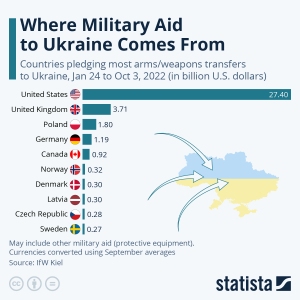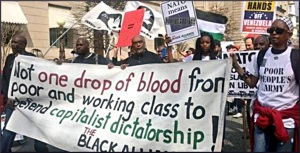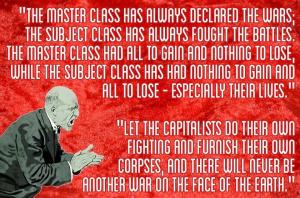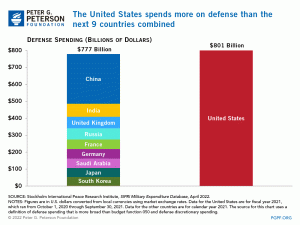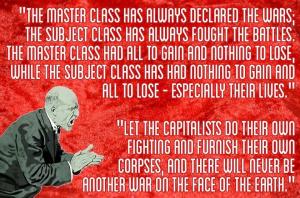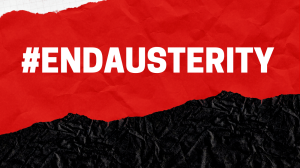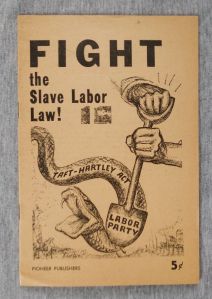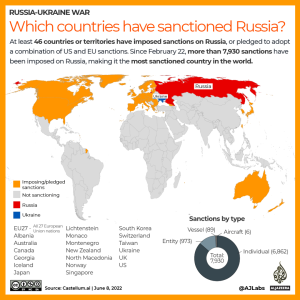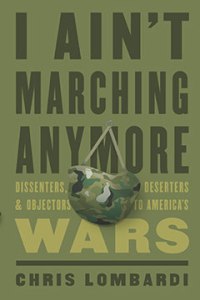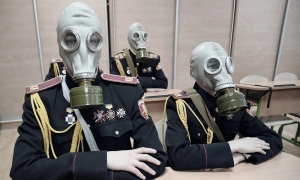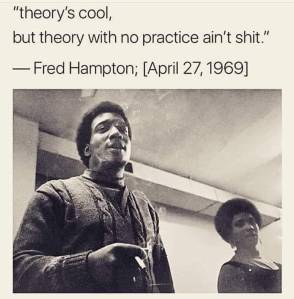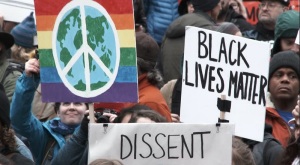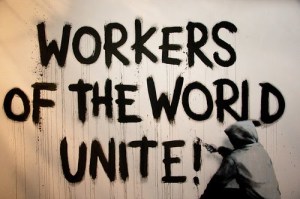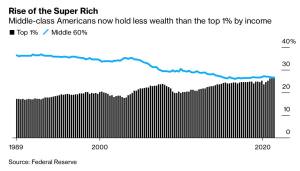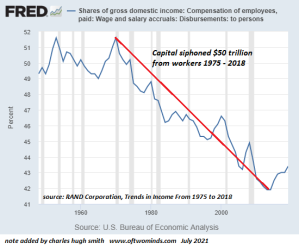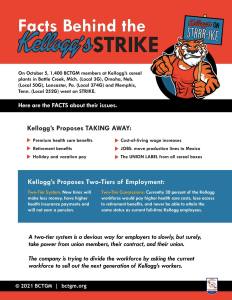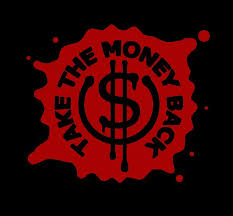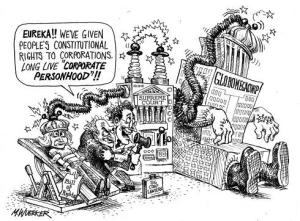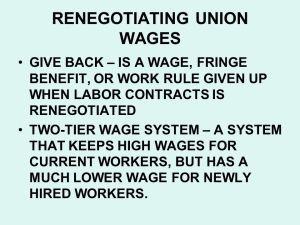The Dictatorship of Big Money
Twenty-first-century fascism is the dictatorship of big money. Finance, fossil fuels giants, other large corporations, and the military-industrial complex, have effectively merged with the state, calling the shots in Washington. An immense surveillance and propaganda machine is at their disposal. Narrative and information control is the first line of defense but the militarized police state acts when all else fails. Big money wants total control and tolerates no rivals.
The dictatorship of big money is impossible without institutional racism paving the way to a new form of institutional fascism.
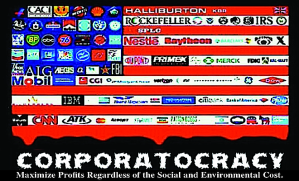
New Fascism for a New Century
Common understandings of fascism rely heavily on 20th-century European history. By those terms, there is no fascism in the US today, except the small neo-fascist gangs. Trump does not check all the boxes by the old definition.[1] If fascism is to have any real meaning — beyond a deceptive get-out-the-vote strategy by Democrats — then we need to rework old interpretations to find the fascism that evolved specifically to our time.
While Trump is no fascist by 20th-century standards, he is by the conditions of the 21st century. The problem is — by those same measures — the Democrats are fascist too. Both parties have managed the rise of corporate fascism and the systematic racism that underlies fascism old and new.
The new neoliberal fascism emerged as the corporate order hollowed out all democratic institutions standing in their way, leaving only empty shells behind to dull the mind and distract the eye.[2] There was no way they could maintain total control and boost profits — in the face of imperial decline, austerity, and climate crisis — without gutting democracy.
The earlier, easy-to-recognize, fascism with goose-stepping troopers, explicitly racist ideology, industrial-style death camps, and ultranationalist war machines has been complemented by harder-to-see and harder-to-resist systematic forms.
From Institutionalized Racism to Institutional Fascism
There is no better way to understand 21st-century fascism than to look at fascism’s evil predecessor: racism.
Black radicals and scholars have argued that African people in the US already live under conditions of fascism and that fascism’s main ingredient is race.[3] Slavery and its aftermath is fascism with American characteristics. As Black Panther Kathleen Cleaver wrote, “Black People have always been subjected to [a] police state and have moved to organize against it, but the structure is now moving to encompass the entire country.”[4] Racism was the soil in which fascism grew.
But, what makes racism and fascism so hard to combat is that it is institutionalized as well as individual. When Kwame Ture and Charles V. Hamilton wrote Black Power: The Politics of Liberation in America, in 1967 they innovated a new understanding of racism that could guide the redefinition and resistance to fascism.
“Racism is both overt and covert. It takes two, closely related forms: individual whites acting against individual blacks, and acts by the total white community against the black community. We call these individual racism and institutional racism. The first consists of overt acts by individuals, which cause death injury or the violent destruction of property…. The second type is less overt, far more subtle, less identifiable in terms of specific individuals committing the acts….The second type originated in the operation of established and respected forces in the society, and thus receives far less public condemnation than the first type.” [5]
Fascism, like racism “takes two closely related forms.” Overt and covert, individual and institutional, respectable and condemnable, reactionary and preemptive, racism is expressed and enforced across a wide spectrum of political actions — so is fascism.
Notice how institutionalized racism does not rely exclusively on open racist ideology. All the big racists must do is command and fund the institutions controlling and exploiting Black and Brown people. Democrats and Republicans alike manage the penal system, police, prison labor, and the intricate web of laws that ration housing, healthcare, education, and employment.
Systematic racism is cold, calculating work. Cold, because it does not require hot-blooded hate — even claiming to be “colorblind.” Calculating, because it counts money. Look at how institutionalized racism works and systematic fascism also becomes visible.
“Full Spectrum Dominance” is Fascism’s First Principle. The Preemptive Strike is its First Strategy.
Systematic fascism uses continuous warfare to impose fascist conditions on war-torn regions and forge alliances with fascist forces. War promotes the most viciously anti-democratic and politically powerful sectors of the US ruling class, as represented by Raytheon and Black Rock.
But it is the doctrine of “full spectrum dominance” that became the guiding principle of the institutional fascists — at home and abroad.[6] The drive to be “preeminent in any form of conflict” is ruling class religion. Any rival, any alternative systems, social experiments, or mass resistance are treated as existential threats, no matter how small or distant.
So while the US working class is not poised to launch a general strike or depose our corporate masters, and union officials are securely tethered in the Democratic stable, the railway workers’ strike must be crushed nonetheless.
Neither is the Green Party an immediate threat to corporate government. A web of state and federal law poses serious obstacles to any third parties. They must, nonetheless, be suppressed and harassed as the lawsuits against Matthew Hoh and the non-stop smear against Dr. Cornel West are but the most recent examples. If “everyone knows the Green Party cannot win” then why has “vote blue no matter who,” lesser evil voting, the “spoiler” and other political commands almost totally replaced open debate on the burning questions of class, racism, war and environment?
The DNC lawsuit against Ranked Choice Voting in Washington DC proves the point: a district without voting Congressional representation must nonetheless be stopped from even considering electoral reform. Similarly, Gavin Newsome had to guard even the deepest blue of all blue states from modest electoral reform by vetoing Ranked Choice Voting passed by the CA legislature in 2019.
Attacks on free speech, journalism, and privacy, are glaring examples of neoliberal fascism. A surveillance and propaganda system, unparalleled in scope and sophistication, aims to impose a totalitarian political discourse via corporate media. The endless partisan drama of the so-called two-party system diverts our attention away from the dictatorship of big money.
The Twitter Files are just a recent example of how corporations, political parties, the military, and secret police join forces to shape public opinion and preempt resistance. The fascist corporate state is tightening information and narrative control. Ask Julian Assange or Omali Yeshitela.
If dominance everywhere — all at once — is the guiding principle of the new fascism, there is no need for the imminent threats to the capitalist order that triggered fascism in 20th-century Europe. But still, the war at home remains the decisive front. If the master class loses control here in the imperial core all is lost. That is why the fascists are preparing for just such a war.
In 2020, when the people arose in mass, disrupting total domination by protesting police violence, the full gamut of fascist action came into play. Protests were blunted with symbolic gestures, cold hard cash, and the fall-into-line factory of yet another “Get Out The Vote” campaign. But the police were so threatened by 20 million protesting racist violence that they cracked heads and broke the law to protect their own power. They tried to crush what could not be bought or assimilated.

The Militarized Police State Fights What Cannot Be Preempted
US police are the third best-funded military in the world. They kill at least 1,300 people — year in and year out — and wounding countless others. No other wealthy country even comes close. Police associations lobby governments, local and national. They help make laws. They rule.
The struggle to “Stop Cop City” contests that rule. Cop City will include a military-style training facility to teach urban assault tactics. A new facility has already been built in Chicago, and there are plans for more across the country.
In Atlanta, the forces of institutional fascism — media, corporations, police, intellectuals, and political officials from both parties — worked through a non-profit, the Atlanta Police Foundation, to promote and fund Cop City. Behind the liberal veneer of a city run by Black Democrats, the police assassinated one protester and charged other non-violent protesters with terrorism, money laundering, and racketeering in an effort to criminalize not just protest but dissenting ideas. Even the most routine forms of democratic input, like petition drives required for a public referendum and public commentary before the city government, have been ignored or blocked. According to AP, prosecutors have linked Stop Cop City with the 2020 protests.
Not to be outdone by the cops on the street, the so-called “intelligence community” has become directly involved in national politics protecting some candidates — as in the Hunter Biden laptop operation — and attacking others — as in Russia-gate and Bernie Sanders’s 2020 presidential bid. The real meaning of Jan.6th will remain unclear until the role of the FBI, DHS, and Capitol Police is revealed. Was it gross incompetence, collusion, provocation, or all three?
The police do not simply enforce the law; they are major political players. 21st-century fascism does not need a fascist militia, a mass fascist movement, or a “properly” fascist party like its 20th-century predecessors. The six hundred thousand uniformed police and the 18 secret police forces do a far better job.
Those who speak confidently about living in a democracy are in deep denial.
The spy and propaganda machines and cop army fight on the front line of 21st-century fascism. But, headquarters is the corporate order.
Austerity, Ruling Class Unity, and the New Fascism
Austerity is class warfare. It is an attack on the home front to maintain control. The gradual and legal redistribution of $50 trillion from the working class to the very richest is fascism itself. Plus, the desperation it creates sets the stage for the rise of demagogues and the use of scapegoats. Why do you think the mainstream political discourse of Democrats and Republicans is so empty of real issues and so full of scapegoats?
Austerity is classic systematic fascism. It makes the suffering of millions of people appear as the natural working of a free market. Nothing could be farther from the truth. Austerity is premeditated policy. It’s a blunt instrument that preempts resistance by weakening and dividing the working class while unifying different wings of the ruling class.
In “The Capital Order: How Economists Invented Austerity and Paved the Way to Fascism,” Clara E. Mattei documents austerity’s essential role in the rise of fascism.
Class war was the common ground where liberals shook hands with fascists. The alliance between UK and US business and political leaders and Italian fascists is a historical fact we cannot lose sight of because the cooperation between seemingly different elite sectors has become routine in the day-to-day working of 21st-century fascism.[7]
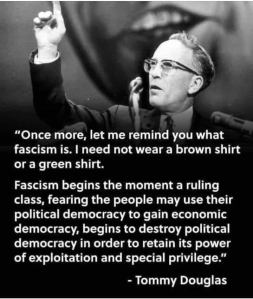
The corporate-state merger may be peak 21st-century fascism but the merger evolved from older forms dating all the way back to capitalism’s early days. However, it wasn’t until the 20th century that activists, authors and politicians became conscious that corporations commanded state power and resorted to fascism to maintain their rule.
“Fascism begins the moment a ruling class, fearing the people may use their political democracy to gain economic democracy, begins to destroy political democracy in order to retain its power of exploitation and special privilege.” — Tommy Douglas (Seventh Premier of Saskatchewan 1944-1961. Considered “The Greatest Canadian” largely for achieving universal healthcare.)
“It is exactly because of the disintegration of Capitalist-Imperialism that it became necessary for the ruling class of Germany to discard bourgeois democratic institutions and resort to open terroristic dictatorship in order to maintain their position.” – George Padmore (leading Pan-Africanist, socialist and author.)
“Their final objective toward which all their deceit is directed is to capture political power so that, using the power of the state and the power of the market simultaneously, they may keep the common man in eternal subjection.” Henry Wallace (Vice President of the US 1941-45)
“That, in its essence, is fascism — ownership of government by an individual, by a group, or by any other controlling private power.” FDR (President of the US 1933 -1945)
Who can tell me with a straight face that big money does not own the US government?
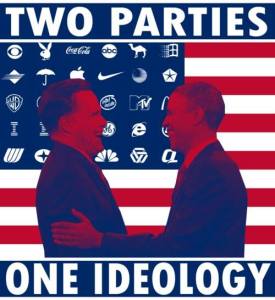
Get Out The Vote — But Not For The Fascists.
We are going to hear a lot about “saving democracy” and “fighting fascism” in the coming months as a get-out-the-vote strategy for Democrats. The Democrats want our thinking about fascism safely contained within the old European 20th-century definition of fascism, for if we use the 21st-century definition, they lose Trump as a foil and enemy and gain him as a brother in arms every bit as committed to systematic racism, the merger of the corporation and state and total dominance as they are.
Capitalism, Socialism, and Fascism do all have something in common: they change over time.
Can we afford not to?
- Enzo Traverso, “Trump’s Savage Capitalism: the Nightmare is Real” in The US Anti-Fascism Reader eds. Bill V. Mullen and Christopher Vials. While I disagree with the editorial slant that sees only the 20th-century European definition as valid, the collection includes many useful articles. In their introduction, the editors apply the old standards and find Trump a danger but something short of a fascist. For example, “His political rhetoric often uses a fascist grammar, but it lacks a properly fascist party or a fascist state.” As I argue, the old definitions are inadequate to our time.
- Chris Hedges has popularized this view using Sheldon Wolfin’s concept of “inverted totalitarianism.” I also want to thank Darvish Shirazi for his concise formulations of contemporary fascism.
- See Chapter 9 in Cedric J. Robinson: On Racial Capitalism, Black Internationalism and Cultures of Resistance, ed H.L.T. Quan.
- Kathleen Cleaver, “Racism, Fascism and Political Murder,” The US Anti-fascism Reader, p. 266.
- Kwame Ture and Charles V. Hamilton wrote one of the great classics of US revolutionary thought, Black Power: The Politics of Liberation in America. p.4
- Ajamu Baraka, “The Delusional Commitment to the Doctrine of Full Spectrum Dominance is leading the US and the World to Disaster,” Black Agenda Report.
- See also Cedric J. Robinson, p.88-90 155-157 and Gabriel Rockhill, Liberalism and Fascism: Partners in Crime, Counterpunch.

